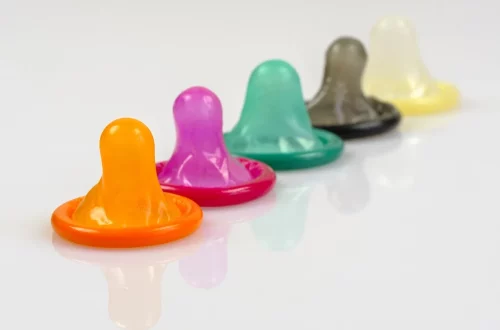
Understanding Horse Semen: A Guide to Equine Reproduction
Understanding horse semen and the broader spectrum of equine reproduction is a fascinating subject that combines biology, genetics, and animal husbandry. For many equestrian enthusiasts and breeders, a deeper understanding of these concepts not only enhances the breeding process but also contributes to the overall health and performance of horses.
Equine reproduction encompasses various aspects, including the anatomy and physiology of the horse reproductive system, the process of breeding, and the science behind semen collection and storage. Given the significant role that horses play in various industries, from sports to agriculture, knowledge in this area is invaluable.
The reproductive cycle of a mare, the intricacies of stallion fertility, and the methods of artificial insemination are just a few topics that illustrate the complexity of equine reproduction. Furthermore, understanding the quality of semen, its characteristics, and how it can be preserved or enhanced can lead to more successful breeding outcomes.
This intricate interplay of biological and practical elements not only benefits breeders but also ensures the continuation of desirable traits in horse lineages. As we delve deeper into this subject, it becomes clear that a comprehensive understanding of horse semen is essential for anyone involved in equine breeding or care.
The Anatomy of Equine Reproductive Systems
To fully appreciate the significance of horse semen, it is crucial to understand the anatomy of the equine reproductive system. The male and female reproductive systems are distinct yet intricately linked, each playing a vital role in the process of reproduction.
In stallions, the primary components of the reproductive system include the testicles, epididymis, vas deferens, seminal vesicles, prostate gland, and penis. The testicles are responsible for producing sperm and testosterone. Sperm production occurs in the seminiferous tubules of the testicles, where spermatogenesis takes place. After sperm is produced, it moves to the epididymis, where it matures and is stored until ejaculation.
On the other hand, the female reproductive system consists of the ovaries, fallopian tubes, uterus, and vagina. The ovaries produce eggs and hormones, while the uterus provides a nurturing environment for a developing fetus. The estrous cycle in mares plays a crucial role in reproduction, as it dictates when a mare is receptive to breeding.
Understanding the reproductive anatomy of both stallions and mares is essential for effective breeding practices. For instance, knowing the optimal time for breeding can significantly increase the chances of successful conception. Additionally, recognizing any anatomical or physiological issues in either gender can help breeders address potential challenges in reproduction.
In summary, the anatomy of the equine reproductive systems provides the foundation for understanding how horse semen works and why it is so vital for successful breeding. This knowledge equips breeders with the necessary tools to make informed decisions and optimize their breeding programs.
The Role of Semen in Equine Breeding
Semen plays a pivotal role in equine breeding as it contains sperm, which is essential for fertilization of the mare’s egg. The quality and quantity of semen can significantly impact the success rate of breeding efforts.
There are two main types of semen used in horse breeding: fresh and frozen. Fresh semen is collected from the stallion and used immediately for insemination, while frozen semen is processed and stored at low temperatures for later use. Each method has its advantages and disadvantages. For example, fresh semen typically has higher motility rates, which enhances the chances of successful insemination. However, frozen semen allows for greater flexibility in breeding schedules and can be shipped across long distances.
The quality of semen is assessed based on several criteria, including motility, morphology, and concentration of sperm. High-quality semen will exhibit a high percentage of motile sperm that are normal in shape. Various factors can influence semen quality, including the stallion’s age, health, and even the time of year.
Breeders must also consider the timing of insemination in relation to the mare’s ovulation cycle. The ideal window for insemination is typically within 24 hours before or after ovulation to maximize the chances of successful fertilization. Using advanced reproductive technologies, such as ultrasound and hormone monitoring, can help breeders pinpoint the optimal time for insemination.
In conclusion, understanding the role of semen in equine breeding is crucial for anyone involved in the breeding process. By focusing on the quality of semen and the timing of insemination, breeders can significantly enhance their chances of achieving successful pregnancies.
Artificial insemination (AI) has revolutionized equine breeding by allowing for greater genetic diversity and improved breeding outcomes. This technique involves introducing semen into the mare’s reproductive tract without natural mating, providing flexibility and convenience for breeders.
The process of artificial insemination begins with the collection of semen from the stallion. This is typically done using an artificial vagina or an electroejaculator. Once collected, the semen is assessed for quality and prepared for insemination, which may involve dilution and the addition of extenders to preserve sperm viability.
There are several methods of insemination that breeders can employ. Transcervical insemination is the most common technique used in horses. This method involves passing a catheter through the cervix and depositing the semen directly into the uterus. It is minimally invasive and can be performed in a standing mare, making it a popular choice among breeders.
Another method, known as surgical insemination, may be utilized in cases where transcervical insemination is not possible due to anatomical issues or when using frozen semen, which may have lower motility rates. This procedure involves a more invasive approach, requiring surgical intervention to place the semen directly into the uterus.
Regardless of the method chosen, timing is crucial for the success of artificial insemination. Breeders must accurately monitor the mare’s estrous cycle to determine the optimal time for insemination. Utilizing tools such as ultrasound and hormone assays can greatly enhance the precision of this timing.
In summary, artificial insemination techniques offer numerous advantages for equine breeding. By understanding the various methods available and the importance of timing, breeders can effectively utilize AI to achieve their breeding goals.
Semen quality is a critical factor that directly influences breeding success in horses. Breeders must prioritize the assessment and management of semen quality to optimize the chances of successful fertilization and healthy foal development.
Key parameters that determine semen quality include sperm motility, morphology, and concentration. High motility indicates that a significant percentage of sperm are actively swimming, which is essential for reaching and fertilizing the mare’s egg. Morphology refers to the shape and structure of the sperm cells; abnormal sperm can hinder fertilization rates. Concentration, or the number of sperm present in a given volume of semen, is also a crucial factor in assessing overall semen quality.
Various factors can affect semen quality, including the stallion’s age, health status, and environmental conditions. For instance, younger stallions typically produce higher-quality semen compared to older ones. Additionally, proper management practices, such as maintaining a healthy diet, regular exercise, and ensuring a stress-free environment, can significantly contribute to optimal semen quality.
Breeders can also employ techniques to enhance semen quality, such as using extenders during semen collection and storage. These extenders are designed to provide nutrients and protect sperm during the cooling and freezing process, thus maintaining viability.
Regular fertility evaluations of stallions can help identify any potential issues with semen quality. Breeders should consider working with reproductive specialists to conduct thorough assessments and develop tailored management plans.
In conclusion, paying close attention to semen quality is essential for successful equine breeding. By understanding and managing the factors that influence semen quality, breeders can maximize their chances of achieving healthy pregnancies and foals.
*This article is for informational purposes only and does not constitute medical advice. For health concerns or questions, always consult a qualified veterinarian.*




